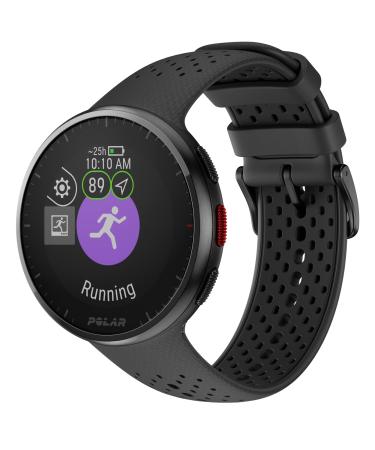KCVzitrd's working frequency: 60 g (58-62 GHz). Single performance: 12 dbm. Modulation method: FMCW Reinforcement of the antenna: 4 DBI Entry angle: Azimuth angle 60 inclination angle 60 Recording range: 0.4 - 1.5 m (breathing and heartbeat chest). Access of breathing measurement: 90 (type.) Frequency range of breathing measurement: 9-48 BPM. Access of heart rate measurement: 90 (type.) Responsibility of the respiratory rate: 60 - 150 bpm. Update time: 50 ms Recognition time: 1 min. Maximum number of people tested: 1 person. Energy requirement: 3.3 V (type) more than 1 a Operating temperature: -20 C to 85 C. Temperature: 40 85 . Data format: ASCII output of the serial connection Package format: 2.0 mm x 8-pin standard pen. Color green. Material: PCB. Size: 25 x 23 mm. Included: 1 x sensor module. Only the above package, other products are not included. Note: Due to the incidence of light and different screen settings, the color of the product can easily deviate from the image.Measuring deviations of - 1-3 cm are possible. Ingredients ingredients PCBWider Covering area: The sensor collects data in an azimuth and inclination angle of 60 and a detection range from 0.4 to 1.5 m, especially focused on the breathing rhythm chest.This ensures precise recognition and monitoring of the breathing and heart rate.Detailed recognition and readings: Sensor only takes 1 minute to create the detection, with a maximum capability of a person.Works with a power consumption of 3.3 V and provides detailed measurements of the respiratory tract and the heart pattern of the person, an important tool for health monitoring.Highly efficient radar module: The LD6002 60G radar module uses the FMCW cycling mechanism that effectively recognizes the radar echo reflected by the human body.Advanced algorithms to process radar signals enable precise measurements of the heart rate and the respiratory frequency of a person in real time.Optimal power supply requirements: The radar module has strict specifications for its power supply, requires a power supply from 3.2 to 3.4 V, a power corradence of less than 50 MV and a current of more than 1 A. If a DCDC power supply is used, one will be usedSwitching frequency of at least 2 MHz recommended to ensure smooth operation.Kcvzitrds Arbeitsfrequenz: 60 g (58-62 GHz). Sendeleistung: 12 dBm. Modulationsmethode: FMCW Verstärkung der Antenne: 4 dBi Erfassungswinkel: Azimutwinkel 60 Neigungswinkel 60 Erfassungsreichweite: 0,4 – 1,5 m (Atmung und Herzschlag Brust). Genauigkeit der Atemmessung: 90 (Typ.) Frequenzbereich der Atemmessung: 9-48 bpm. Genauigkeit der Herzfrequenzmessung: 90 (Typ.) Messbereich der Atemfrequenz: 60 – 150 bpm. Aktualisierungszeit: 50 ms Erkennungszeit: 1 min. Maximale Anzahl der getesteten Personen: 1 Person. Energiebedarf: 3,3 V (Typ. ) Mehr als 1 A Betriebstemperatur: -20 C bis 85 C. Temperatur: 40 85 . Datenformat: ASCII-Ausgang des seriellen Anschlusses Paketformat: 2,0 mm x 8-poliger Standardstift. Farbe: Grün. Material: PCB. Größe: 25 x 23 mm. Im Lieferumfang enthalten: 1 x Sensormodul. Nur das oben genannte Paket, andere Produkte sind nicht im Lieferumfang enthalten. Hinweis: Aufgrund von Lichteinfall und unterschiedlichen Bildschirmeinstellungen kann die Farbe des Produkts leicht von der Abbildung abweichen. Messabweichungen von - 1-3 cm sind möglich. INHALTSSTOFFE ZUTATEN PCBBreiter Erfassungsbereich: Der Sensor erfasst Daten in einem Azimut- und Neigungswinkel von 60 und einem Erfassungsbereich von 0,4 bis 1,5 m, speziell auf den Atemrhythmus Brustkorb ausgerichtet. Dies gewährleistet eine genaue Erkennung und Überwachung der Atem- und Herzfrequenz. Detaillierte Erkennung und Ablesungen: Sensor dauert nur 1 Minute, um die Erkennung zu erstellen, mit einer maximalen Erkennungsfähigkeit einer Person. Funktioniert mit einem Stromverbrauch von 3,3 V und liefert detaillierte Messungen der Atemwege und des Herzmusters der Person, ein wichtiges Werkzeug für die Gesundheitsüberwachung. Hocheffizientes Radarmodul: Das LD6002 60G Radarmodul nutzt den FMCW-Radarmechanismus, der effektiv die vom menschlichen Körper reflektierten Radarechos erkennt. Fortschrittliche Algorithmen zur Verarbeitung von Radarsignalen ermöglichen präzise Messungen der Herzfrequenz und der Atemfrequenz einer Person in Echtzeit. Optimale Stromversorgungsanforderungen: Das Radarmodul hat strenge Spezifikationen für seine Stromversorgung, erfordert eine Stromversorgung von 3,2 bis 3,4 V, eine Stromwelligkeit von weniger als 50 mV und einen Strom von mehr als 1 A. Wenn ein DCDC Netzteil verwendet wird, wird eine Schaltfrequenz von mindestens 2 MHz empfohlen, um einen reibungslosen Betrieb zu gewährleisten.














![Stewart Freeze Dried Dog Treats Made in USA [Single Ingredient Puppy and Dog Training Treats - Grain Free Natural Dog Treats] Resealable Tub to Preserve Freshness](https://www.gosupps.com/media/catalog/product/cache/25/small_image/375x450/9df78eab33525d08d6e5fb8d27136e95/6/1/61gwbbixarl._ac_sl1500_.jpg)
